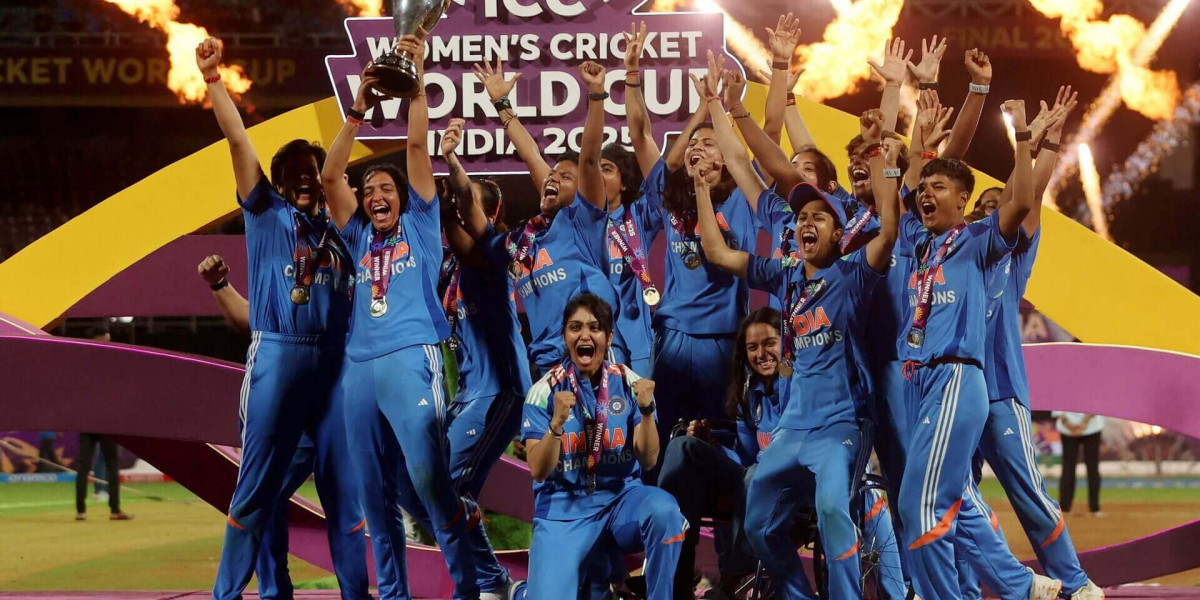In a landmark achievement for Indian sport, the India women's national cricket team clinched the 2025 ICC Women’s Cricket World Cup title in front of a roaring home crowd. It is a moment that transcends a single tournament: it is the culmination of decades of effort, evolving infrastructure, stalwart athletes, and growing recognition of women’s cricket in India. To fully appreciate this triumph, we need to step back and survey the broader history of the Women’s World Cup, trace India’s journey through it, look at key milestones and players, and then explore how the 2025 title was won and what it means moving forward.
The History of the Women’s Cricket World Cup
The Women’s Cricket World Cup predates the men’s by two years, with the inaugural edition held in England in 1973.
In that 1973 tournament, the host nation England emerged victorious. Over the years the competition expanded both in participants and influence, becoming the premier 50-over women’s global event.
Australia have been the dominant force in the Women’s World Cup, capturing the trophy seven times as of 2025. England follow with four titles, and New Zealand one. Up until very recently, India had never won the trophy despite strong performances.
To contextualize:
1978: Australia beat England to claim the second edition.
Through the 1980s, 1990s and early 2000s the tournament continued with Australia and England alternating dominance.
India first made serious impact in the early 2000s, culminating in their first final appearance in 2005 (which they lost to Australia) and again in 2017 (lost by a narrow margin to England). Wikipedia+1
The Women’s World Cup is more than just a tournament, it reflects the evolving global recognition of women’s cricket, growing professionalism, improved pathways, and shifting public perception. The fact that the Indian women’s side finally lifted the trophy in 2025 is a culmination of that growth.
India’s Women’s Team: A Journey Through the Years
Early Years & Growth
The Indian women’s cricket team has a history of gradual growth. According to historical records, India has played hundreds of ODIs and T20Is with mixed results in the early years but consistent improvement over time.
World Cup Final Appearances Before 2025
2005: India reached the Women’s World Cup final for the first time, only to be defeated by Australia (lost by 98 runs).
2017: India again contested the final, this time losing to England by just 9 runs in a heartbreaking finish.
These near-misses weighed heavily, but also served as stepping stones for the next generation.
Performance Trends & Key Achievements
As of 2025, India’s women’s team is ranked third in ODI rankings and third in T20I rankings. Their Asia Cup successes: e.g., winning the Women’s Asia Cup multiple times (2004, 2005-06, 2006, 2008) in the ODI format.
These achievements matter for two reasons: one, they reflect India’s regional strength; two, they provided a foundation for global ambition.
Breakthrough Moments
In the lead-up to 2025, India produced several standout performances:
In the 2025 WC semi-final, India chased down a record total (339) against Australia to reach the final. This chase is now recorded as one of the highest successful run chases in women’s ODI history.
The team’s performance in the group phases and knockouts grew in depth, with contributions across batting, bowling and fielding.
The 2025 Title Campaign
The 2025 Women’s World Cup campaign for India was historic:
India posted 298/7 in the final (second highest total in a Women’s World Cup final) while chasing (or rather setting) that target.
In the semi-final, Jemimah Rodrigues scored an unbeaten 127 to propel the team to victory over Australia.
Smriti Mandhana set new individual records, becoming India’s highest single-edition run-getter in the tournament. The Times of India
The win also carried symbolic weight: 50 years since India’s early women’s cricket days, the title finally came.
Key Players & Their Contributions
Let’s highlight some of the major contributors:
Smriti Mandhana – Elegant left-hander, consistent performer, breaking records in 2025 for India.
Jemimah Rodrigues – Young and dynamic, with the century in the semi-final signposting her championship temperament.
Deepti Sharma – All-rounder whose contributions with both bat and ball in crucial matches made the difference.
Harmanpreet Kaur – The captain who marshalled the squad, gave impetus and belief.
Richa Ghosh – A breakout performer, capable of changing games with her bat and keeping behind the stumps.
Beyond individuals, the team’s culture changed: improved fitness, strategic planning, more overseas exposure, better domestic pathways, leadership development. The results show.
The 2025 Final and What It Signifies
On 2 November 2025, at the Dr DY Patil Stadium in Navi Mumbai, India defeated South Africa women's national cricket team by 52 runs in the final to win the Women’s World Cup.
Some key takeaways:
The win ended India’s long wait for the trophy after previous final losses.
It placed India alongside Australia, England and New Zealand as Women’s World Cup winners.
The scale of the win, along with the high-stakes semi-final and performances, signals the coming of age of Indian women’s cricket.
It will have positive ripple effects on investment, visibility, youth participation, media attention and public support.
Why It Matters – Beyond the Trophy
The significance of this victory goes well beyond the final wicket or the trophy lift. Some of the broader implications:
Role Models and Inspiration – Young girls across India now have tangible world-champions to look up to, not just in name but in achievement.
Investment in Women’s Sport – Success drives sponsors, broadcasters, and institutions to prioritise women’s cricket. Better pay, better facilities, better exposure.
Breaking Stereotypes – Cricket in India has long been male-dominated. A major win shifts narratives about women in sport and builds belief.
International Credibility – India is now firmly a global powerhouse in women’s cricket, not just a challenger.
Domestic Growth – The pathway from club to domestic to national will gain momentum. More talent will come through, competition will intensify, raising standards.
Long-Term Legacy – The win will likely change how the sport is structured: more professional contracts for women, stronger support systems, enhanced training, and potential for India to dominate rather than catch up.
Challenges and the Road Ahead
No victory is without its challenges, and for the Indian women’s game there are still hurdles to address:
Sustaining Momentum: Winning once is momentous; staying at the top is harder. Consistent performance across formats (ODI, T20) is required.
Infrastructure & Domestic Depth: While top-end talent is strong, ensuring depth across states and regions remains a task.
Visibility and Broadcast: Ensuring that women’s matches have equal exposure, quality telecasts, and audience engagement.
Commercial Viability: Sponsorship and revenue models for women’s cricket need to grow to match investment.
Balancing Formats: With T20s, ODIs and even Test opportunities emerging, managing player workload and format transitions is essential.
What to Watch For
Here are several areas to keep an eye on in the coming years:
How India performs in upcoming World Cups (T20, ODI) and whether the 2025 success translates to sustained dominance.
Emerging players: Who steps up next? The likes of Richa Ghosh, younger batters and bowlers will be key.
Domestic leagues and how they foster talent for the national side.
The impact of this win on women’s cricket viewership, commercial interest and societal perception.
Whether India can host, organise and win more global tournaments, and how the scheduling and calendar expand for women’s cricket.
Reflection: The Indian Cricket Team (Men’s) Parallel & Synergy
While this post focuses on the women’s side, it’s worth noting how this success complements the broader cricketing ecosystem in India. The men’s team has had world-cup wins and deep runs; now the women’s team joins that elite club, enriching Indian cricket’s narrative as a whole. Cross-learning, shared facilities, mentoring, and joint growth might accelerate both sides.
The 2025 Women’s World Cup win for India is not just a trophy, it is a milestone, a validation of years of hard work, and a beacon for the future of women’s sport in India. From the early days when women cricketers had limited resources and little public support, to a generation who now stand atop the world, the journey is remarkable. The women in blue (and beyond) have shown that belief, skill and strategic preparation can turn history.
As the confetti falls and the celebrations roar, the real test begins: sustaining this excellence, building on it, and ensuring that the next generation never has to ask “when will India win?” but instead “how many times will India win?”.
For fans like you and I, this is an invitation: to watch, support, invest, and bask in the growth of a team that has earned its place on the world stage. And for the young girls picking up a bat or ball today, the message is clear: the world is watching and you can belong among the champions.



